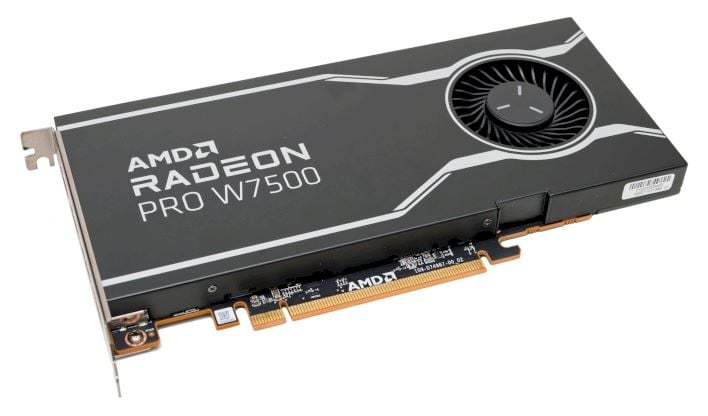AMD Radeon Pro W7600 And W7500 Review: Value-Driven Pro-Vis Graphics
AMD Radeon Pro W7600 And W7500: Cryptography, Image Processing/ Compute and Rendering
How We Configured Our Test Systems: We tested the professional graphics cards represented in this article on a MSI Z790 Carbon motherboard, equipped with a Core i9-13900KS processor and 32GB of G.SKILL DDR5 RAM clocked at 5,800MHz. The first thing we did when configuring the test system was enter the UEFI and set all values to their "high performance" defaults, then we disabled any integrated peripherals that wouldn't be put to use, and enabled Resizable BAR support. The memory's clock was dialed in to its optimal performance settings using its XMP profile and the solid state drive was then formatted and Windows 11 Professional was installed and fully updated. When the Windows installation was complete, we installed all of the drivers, applications and benchmark tools necessary to complete our tests.
Please note, in the absence of a lower-end competitive NVIDIA card like the T600 or T1000, we tested the most mainstream Quadro we had available, a Quadro RTX 4000, for an additional reference point.
Out Test System Configuration:
| Hardware Used: Intel Core i9-13900KS (5.4GHz - 6GHz, 24-Core) MSI Z790 Carbon (Intel Z790 Chipset) 32GB G.SKILL DDR5-5800 Samsung SSD 990 Integrated Audio Integrated Network NVIDIA Quadro RTX 4000 AMD Radeon Pro W6600 AMD Radeon Pro W7500 AMD Radeon Pro W7600 AMD Radeon Pro W7800 |
Relevant Software: Windows 11 Pro AMD Radeon Pro v23.Q2 NVIDIA Quadro Drivers v536.67 Benchmarks Used: SPECviewperf 2020 v3.1 LuxMark v4 Blender v3.6 SiSoft SANDRA 2021 VRMark Blackmagic RAW Speed Test IndigoBench 3DMark DXR Feature Test |
SiSoft SANDRA 20201 GPU Benchmarks
SANDRA's GPGPU Image Processing benchmark runs through an array of filters on its reference data and offers up an aggregate score, derived from a multitude of individual results. Its GPGPU Cryptography benchmark churns through an assortment of workloads, and presents individual results for overall bandwidth, AES256 encryption and decryption, and SHA2-256 hashing bandwidth. CUDA and OpenCL code paths are available in these tests and using the CUDA path with NVIDIA GPUs usually results in better performance, but we tested both to get a more complete picture.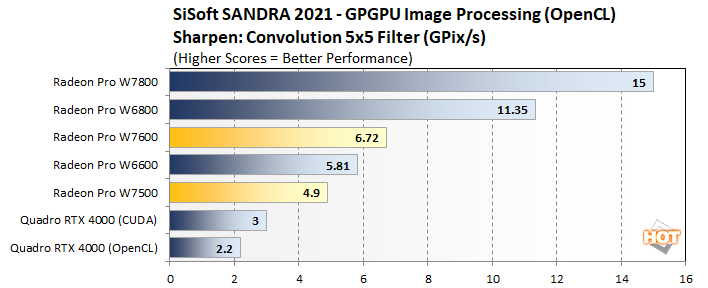


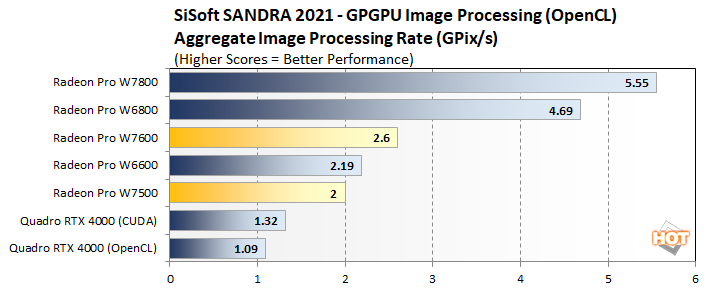
The new Radeon Pro W7600 And W7500 perform well here, sandwiching the previous-gen Radeon Pro W6600, but clearly outrunning the Quadro RTX 4000. We've also included two higher-end cards for reference, which show the kind of huge performance gains offered by springing for a beefier, more-powerful GPU.

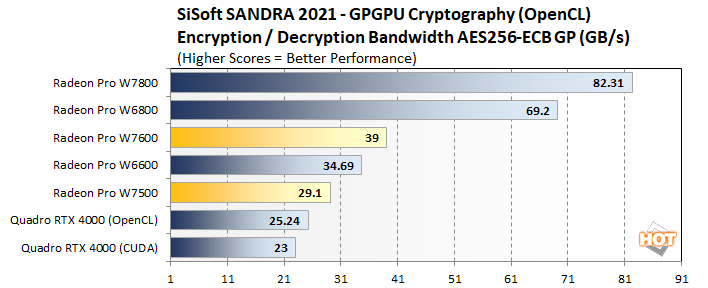
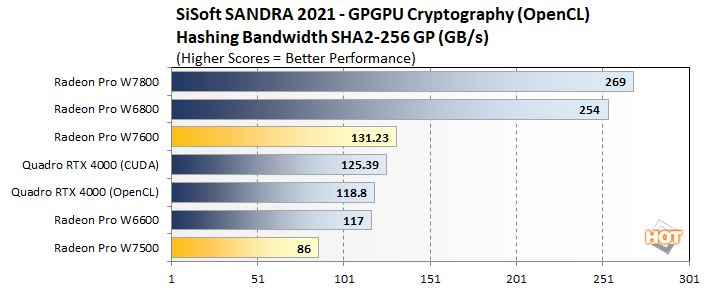
LuxMark v4.0 Benchmarks
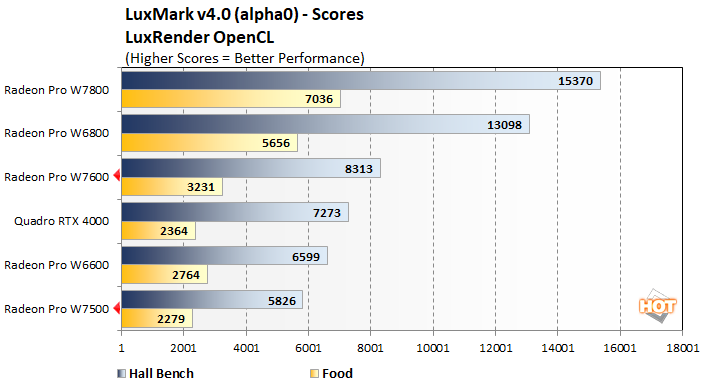
IndigoBench Rendering Benchmarks

This benchmark tends to favor NVIDIA GPUs, as evidenced by the Quadro RTX 4000 trading blows with the Radeon Pro W7600, depending on the model. The Radeon Pro W7500 falls behind the previous-gen W6600 here, again, likely due to its reduced memory bandwidth.
Blender v3.6 Rendering Benchmarks
Blender is a free and open source 3D creation suite that can handle everything from modeling, rigging, animation, simulation, rendering, compositing and motion tracking, even video editing and game creation. It has a built-in benchmarking tool that will track the time it takes to complete rendering a particular model. We used a GPU-focused BMW and the "fishy cat" models for these tests...

